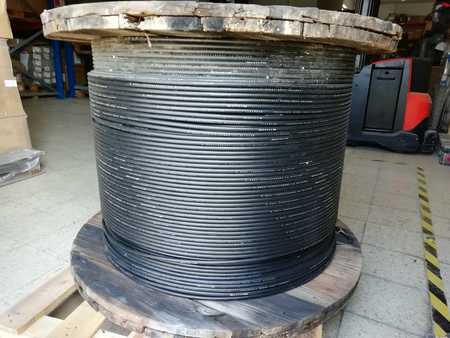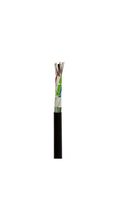Product Details
Similar Products
Product Description
The 12FO (1x12) Duct Loose Tube Fiber Optic Cable SM G.652.D (Part number: 1300N/4381711) from Corning with 12FO. Conduit cables are underground cables, that may be conducted by duct or buried directly into the ground. There are several types of protections for this cable such as anti-rodent or double protection. Conduit cables are built to withstand harsh environments and are typically routed by pull or blow.
twoosk marketplace is selling off the Duct Cable 12FO L1x12U4ST TONZE G652D Corning from Corning.
You find this product within the category FO Cables at best prices. Thousands of products online and more if you contact us. All products available for immediate delivery: Duct, ADSS, Fig8, microduct, Indoor, Riser, flat, armoured, anti rodent, special cables
Reference: TP008330
Part number: 1300N/4381711
Design and special properties
· Light, thin and robust cable
· Cable for pulling into duct systems, laying in concrete channels or on cable racks
· Optimized cable stiffness yields an excellent blowing performance
· Fully dielectric cable requires no grounding or potential equalization
· Dry cable core by swellable elements
· Single-layer construction up to 12 stranding elements
· Single mode fibers fully compliant to standard ITU G.652 D (reduced OH- peak) showing low attenuation throughout the 1285 nm to 1625 nm wavelength range
· PT standard for fiber and loose tube coloring
· Cable design according to Corning standard
Product Specifications
Fiber Type (ITU) - OS2 G.652.D
Each type of single-mode fiber has its own area of application, and the evolution of these optical fiber specifications reflects the evolution of transmission system technology from the earliest installation of single-mode optical fiber to the present day. Choose the right fiber is very important for each project/installation. The specification of the OS2 fiber is generally considered as the SMF standard for the single-mode fiber. For the OS2 G.652 fiber there are 4 subcategories: G.652.A, G.652.B, G.652.C, G.652.D.
The OS2 G.652.D single-mode fibers are the most used type of fiber for networking and communications applications. The OS2 G.652.D fiber type provides a zero dispersion at 1310nm wavelength therefor it is optimized for operation in the 1310nm Wavelength. The regular performance remains on the 1550nm wavelength.
Benefits of using the OS2 G.652.D fibers:
- Backward compatibility with earlier versions;
- Lower system cost;
- Offers zero water peak and seamless splicing;
- Lower splicing losses;
- Supports longer cable runs.
FOC Construction - Loose tube
While using a loose tube construction in cables, you can:
- Pull and stretch without causing fractures from bending or tension;
- Have full resistant protection of the fiber core, cladding and coating (mechanical protection and UV protection);
- Reach optimized performances at extreme temperatures;
- Avoid the risk of environmental damage (including water damage).
The loose tube construction solution can be chosen for the following applications:
- Direct buried;
- Aerial;
- Duct;
- Rodent resistant;
- Indoor and outdoor;
- Water-blocking;
- Temperature endurance.
Fiber Mode - Single Mode (SM)
Single mode fiber uses a LASER light source, is a type of optical fiber with a small core diameter that allows only one mode of light to propagate. It is used in telecommunications and data transmission systems to transmit signals over long distances with low attenuation and high bandwidth. Single mode fiber is ideal for high-speed and long-distance applications, such as internet backbone networks, cable television networks, and fiber-to-the-home (FTTH) services. Its narrow core reduces the dispersion of light, allowing signals to travel further and faster than with multimode fiber.


.jpeg?locale=en)
.jpeg?locale=en)

.jpeg?locale=en)
.jpeg?locale=en)
.png?locale=en)








.png?locale=en)










